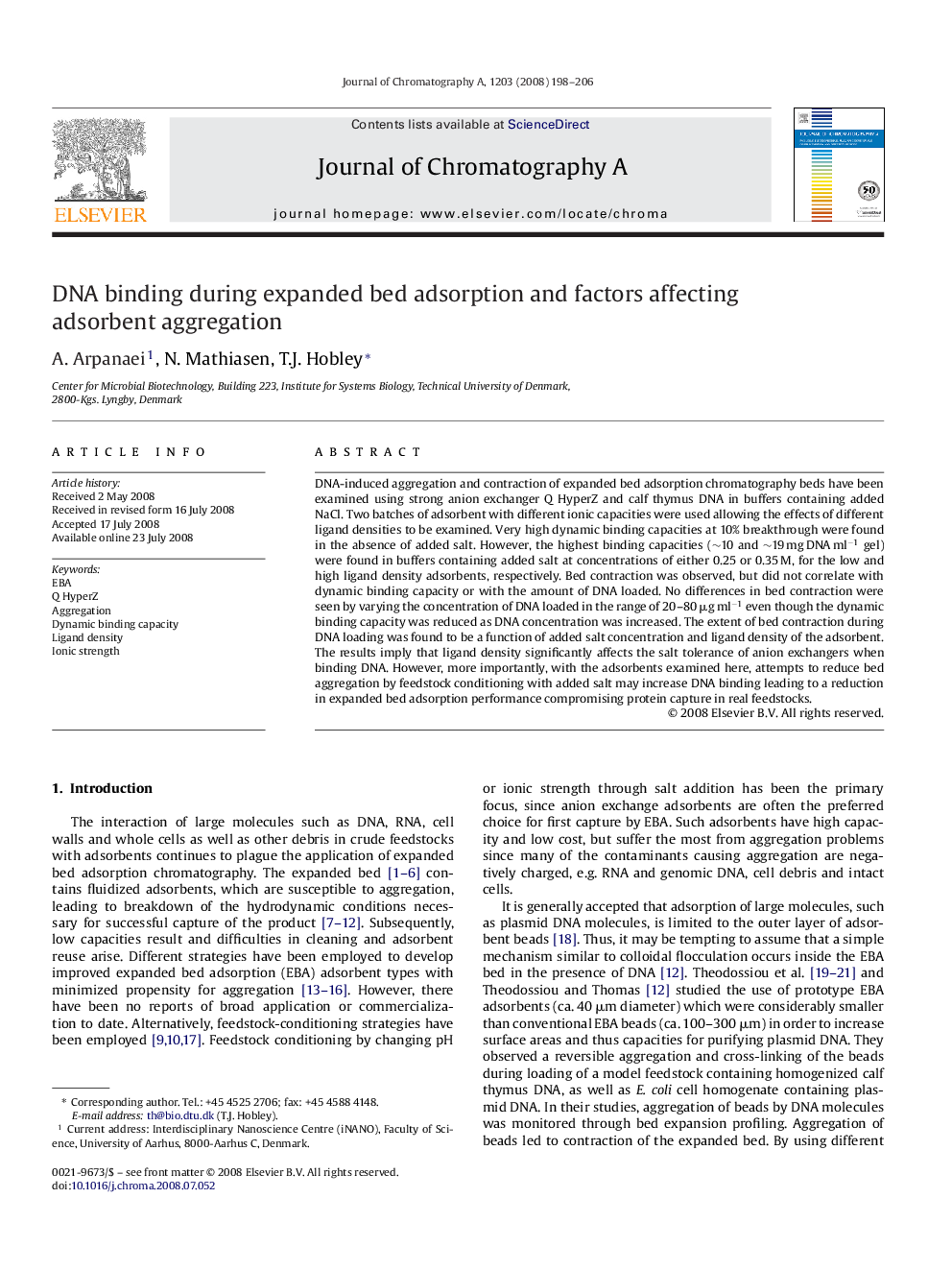| Article ID | Journal | Published Year | Pages | File Type |
|---|---|---|---|---|
| 1207757 | Journal of Chromatography A | 2008 | 9 Pages |
Abstract
DNA-induced aggregation and contraction of expanded bed adsorption chromatography beds have been examined using strong anion exchanger Q HyperZ and calf thymus DNA in buffers containing added NaCl. Two batches of adsorbent with different ionic capacities were used allowing the effects of different ligand densities to be examined. Very high dynamic binding capacities at 10% breakthrough were found in the absence of added salt. However, the highest binding capacities (â¼10 and â¼19 mg DNA mlâ1 gel) were found in buffers containing added salt at concentrations of either 0.25 or 0.35 M, for the low and high ligand density adsorbents, respectively. Bed contraction was observed, but did not correlate with dynamic binding capacity or with the amount of DNA loaded. No differences in bed contraction were seen by varying the concentration of DNA loaded in the range of 20-80 μg mlâ1 even though the dynamic binding capacity was reduced as DNA concentration was increased. The extent of bed contraction during DNA loading was found to be a function of added salt concentration and ligand density of the adsorbent. The results imply that ligand density significantly affects the salt tolerance of anion exchangers when binding DNA. However, more importantly, with the adsorbents examined here, attempts to reduce bed aggregation by feedstock conditioning with added salt may increase DNA binding leading to a reduction in expanded bed adsorption performance compromising protein capture in real feedstocks.
Related Topics
Physical Sciences and Engineering
Chemistry
Analytical Chemistry
Authors
A. Arpanaei, N. Mathiasen, T.J. Hobley,
